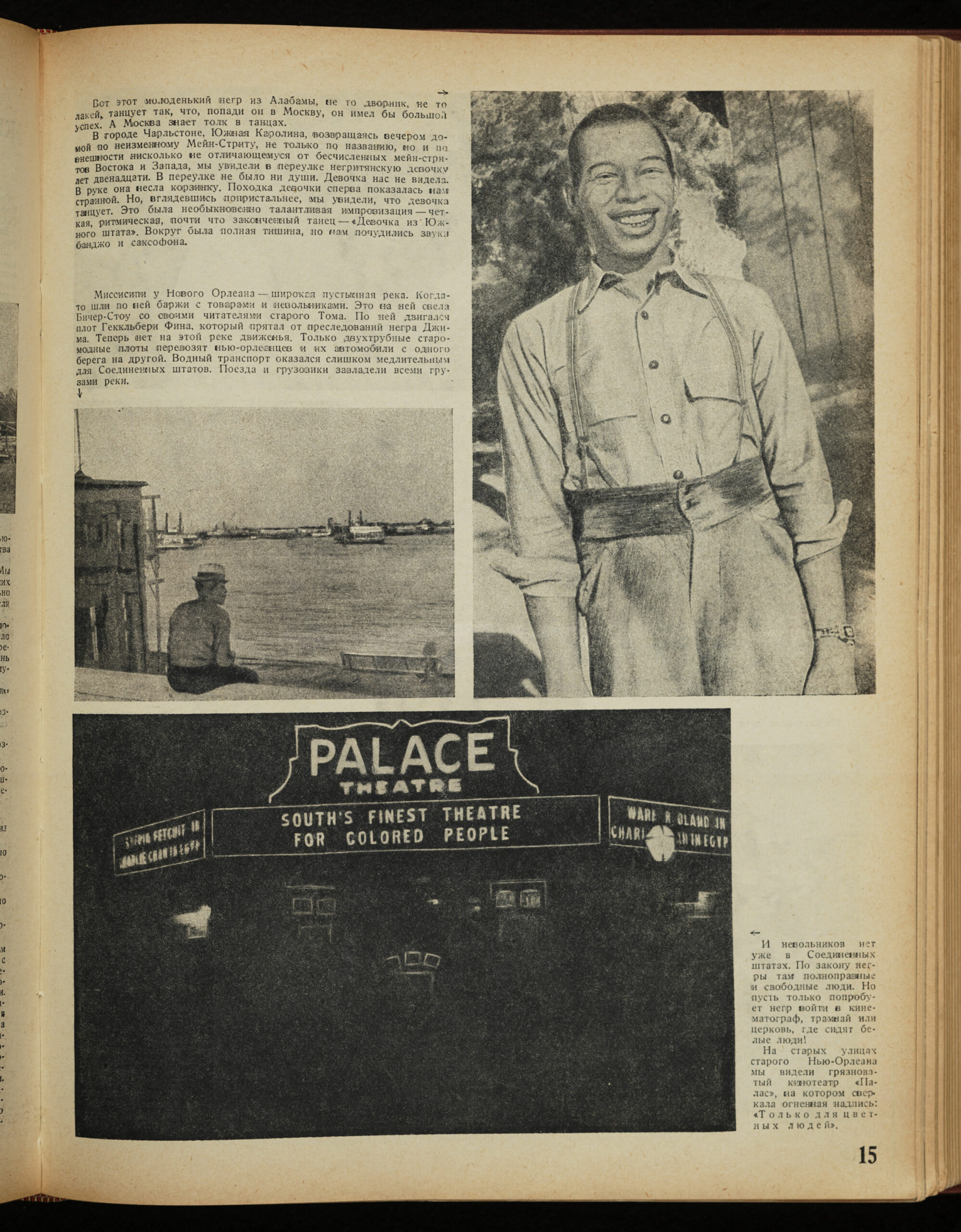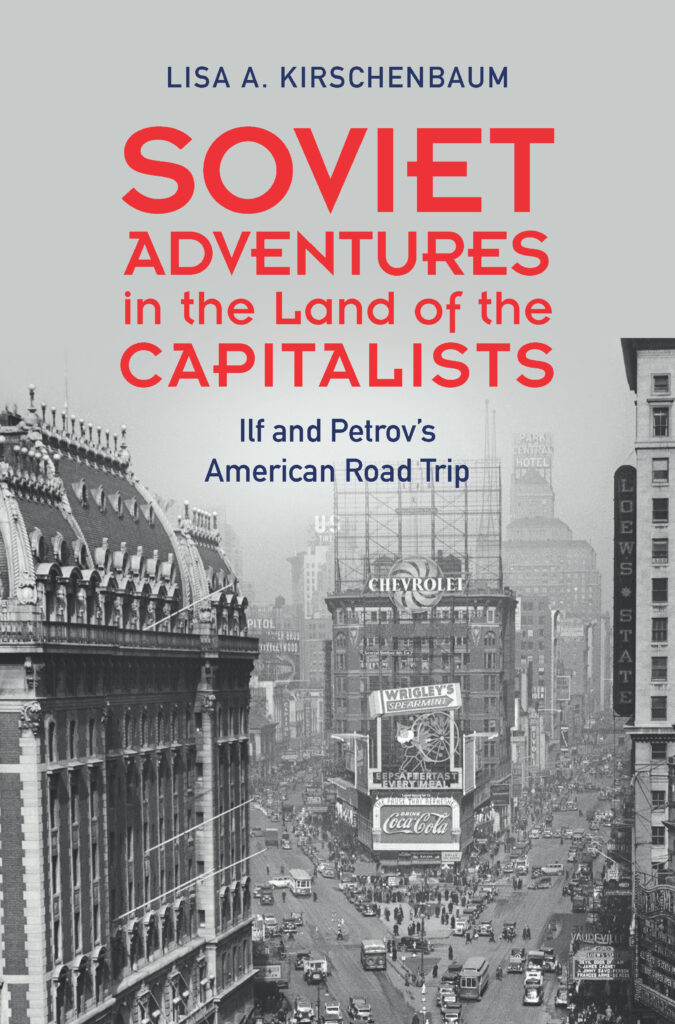
In 1935, just two years after the normalization of Soviet American relations, Pravda sent two humorists to the United States as reporters and cultural ambassadors. That the Soviet Union under Stalin even had humorists may surprise many. But Ilya Ilf and Evgeny Petrov were genuine Soviet funnymen, the coauthors of two beloved satirical novels, The Twelve Chairs (1928) and The Little Golden Calf (1931). In New York, the pair purchased a brand-new Ford sedan, and set out on a 10,000-mile road trip to Hollywood and back — accompanied only by their guide and chauffeur, a gregarious Russian Jewish immigrant and his Russian-speaking, American-born wife. The writers immortalized their journey in a serialized photo essay in the journal Ogonek (something like a Soviet Life magazine) and in the book One-Story America, published almost simultaneously — and rather amazingly — in Soviet and American editions in 1937, at the height of the Stalinist terror.
Eighty-four years later, I decided to retrace Ilf and Petrov’s road trip. I was motivated by a desire to explore the hopeful if fleeting moment when the Soviet Union and the United States engaged in the project of constructing friendly relations. Ilf and Petrov’s excellent adventure offers a grassroots view of this process. To a degree unacknowledged in their published work, the writers relied on immigrants, communists, and fellow travelers as hosts, guides, and translators. Reconstructing their journey provided a means of locating these mediators and gauging how they understood their own positions in these exchanges. Restoring these complex individuals to the to the story of Soviet American cultural relations, my book Soviet Adventures in the Land of the Capitalists makes it possible to see foreign policy as something that ordinary individuals not only responded to but to some extent made.
With Ilf and Petrov’s copious notes as my guide, I tracked down a wide range of characters who interacted with the funnymen: diplomats, journalists, anthropologists, artists, poets, novelists, filmmakers, engineers, jokers, dockworkers, revolutionaries, and a few scoundrels. Each stop along their route became a discrete research problem, and each vignette required its own, often creative sourcing solution. I drew on everything from government records – for example, the visa interview in which Ilf lied about having relatives in the United States – to the files of a WPA oral history project that, like Ilf and Petrov, collected the reminiscences of San Franciscans born in the Russian empire. My purpose in excavating the archival traces of their trip was less to judge their accuracy than to locate their informants’ perspectives. Read against Ilf and Petrov’s letters and narratives, the American stories illuminate the shared concerns as well as the preconceptions and misconceptions that shaped and sometimes limited efforts to understand the Other.
Nowhere were these preconceptions more powerful than in Ilf and Petrov’s observations of Black America. Like all Soviet visitors since the 1920s, the writers arrived convinced that Soviet people were far more enlightened about race than white Americans. To interpret their journey through what they called the “Southern Negro states,” the writers relied on their own presuppositions. Combining Soviet antiracism and “romantic” racialization, they perpetuated essentialized representations of African Americans as gifted primitives. Ilf and Petrov provided a whole list of allegedly “Negro characteristics” — artistic, impressionable, imaginative, contemplative, emotional, and inquisitive — that, they asserted, white Americans denigrated as impeding the operation of capitalism. By contrast, Ilf and Petrov emphasized that Soviet people appreciated such traits. Vigorously condemning segregation and the white person’s need “to look down on the black one,” the writers did not question the fundamental assumption of Black difference. Rather than dismantling racist stereotypes, Ilf and Petrov simply revalued them.
Following Ilf and Petrov’s footsteps, pinpointing the spots where Ilf shot his photographs, I tried to see the United States through their eyes. The process posed fundamental questions of how and whether we can understand people separated from us by identity, ideology, language — and time. This is in many ways the basic problem of historical research. Historians always operate as outsiders, separated from the object of their study by time and often much else besides. Investigating Ilf and Petrov’s efforts to observe, understand, and empathize across political, cultural, and linguistic boundaries raised essential historical questions in particularly acute forms. How does outsider status shape, warp, or perhaps enhance our powers of observation? Where does interpretation end and judgment begin? Can we set aside, however briefly, our own presuppositions and glimpse the world and the Other anew? Appreciating the Other’s perspective, can we laugh at ourselves?

Latest Comments
Have your say!